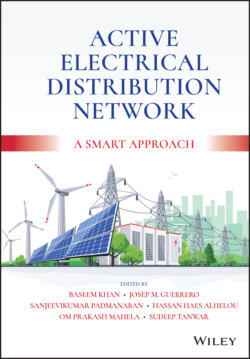Читать книгу Active Electrical Distribution Network - Группа авторов - Страница 17
1.3 Electricity Distribution Structures and Business Models
ОглавлениеIn most countries, transmission systems have been expanded in a planned way based on detailed technical studies, but there is an unplanned and haphazard expansion in the distribution sector with the objective of meeting the growing urgent consumer demand. Due to this reason, the distribution system has become inefficient, leading to the following technical and governance challenges:
Technical challenges: huge aggregate technical and commercial (AT&C) losses, poor power quality, low reliability, etc.
Governance challenges: problems with things related to operation and maintenance, adequate metering, dealing with cross subsidy, energy billing, activity outsourcing, improving financial status of distribution utilities, mechanisms for attracting private investors, etc.
Hence, many distribution utilities across different countries are characterized as inefficient with a low productive system. To overcome technical- as well as governance-related difficulties, basic and radical restructuring of the power sector has become imperative [7]. Unbundling, corporatization, privatization, and outsourcing were the major initiatives under restructuring. As a result, four different models to carry out the function of power distribution have evolved across the globe, viz. government-owned Distribution Company, privately owned Distribution Company, Public–Private–Partnership Model, and Distribution Franchisee, as shown in Figure 1.1.
Figure 1.1 Different distribution models evolved.
